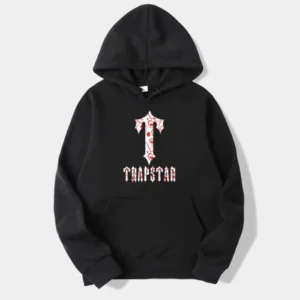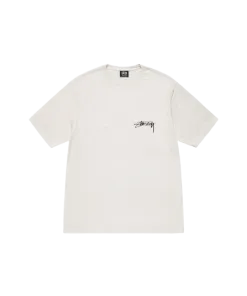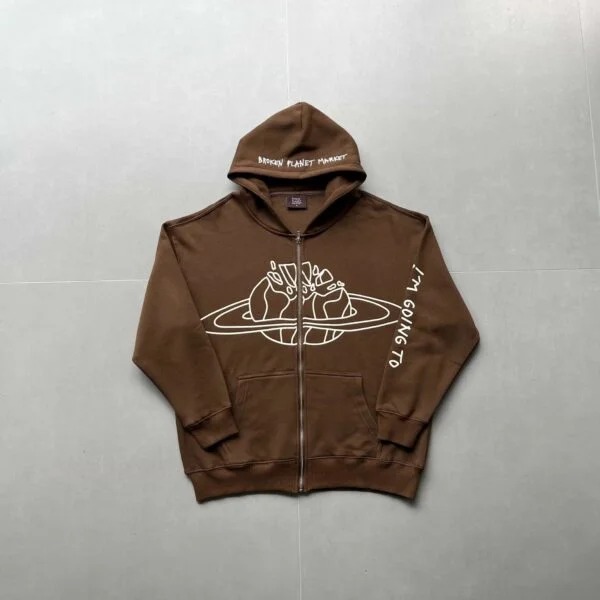Introduction
Trapstar is a London-based streetwear brand that has garnered international acclaim for its edgy designs, distinctive aesthetic, and cultural impact. Founded by Mikey, Lee, and Will, the brand emerged from the underground music and fashion scenes to become a prominent player in the global streetwear market. This article delves into the origins, design philosophy, cultural significance, and future prospects of Trapstar, highlighting its journey from a niche label to a mainstream powerhouse.
Origins and Evolution
Founding and Early Days
Trapstar was established in 2005 by three friends—Mikey, Lee, and Will—who shared a passion for fashion, music, and street culture. The brand started as a small-scale operation, with the founders creating and selling their designs at local events and through a makeshift store in Portobello Market, London. The name “Trapstar” itself is a blend of “trap” and “star,” reflecting the brand’s roots in urban music culture and its aspiration to achieve stardom through fashion.
Growth and Expansion
The brand’s early success can be attributed to its authentic connection to the street culture of London. Trapstar quickly gained a loyal following among the city’s youth, who were drawn to its bold graphics, rebellious slogans, and high-quality garments. As word spread, the brand began to attract attention from celebrities and influencers, further boosting its profile. Collaborations with prominent figures in music and sports, such as Rihanna, A$AP Rocky, and Jay-Z, helped propel Trapstar into the international spotlight.
Design Philosophy and Aesthetic
Edgy and Rebellious
Trapstar’s design philosophy is rooted in an edgy and rebellious aesthetic that challenges conventional fashion norms. The brand’s collections often feature bold graphics, provocative slogans, and a dark, moody color palette. This distinctive style reflects the founders’ desire to create clothing that stands out and makes a statement, resonating with a generation of consumers seeking to express their individuality.
Inspiration from Urban Culture
Urban culture, particularly the music and street scenes of London, heavily influences Trapstar’s designs. The brand’s name itself is a nod to the “trap” music genre, which originated in the southern United States but has since become a global phenomenon. Trapstar’s clothing often incorporates elements of hip-hop, grime, and punk culture, creating a unique blend that appeals to a wide audience.
High-Quality Craftsmanship
Despite its streetwear roots, Trapstar places a strong emphasis on high-quality craftsmanship and attention to detail. The brand’s garments are made using premium materials and advanced manufacturing techniques, ensuring durability and comfort. This commitment to quality has helped Trapstar establish itself as a reputable and respected name in the fashion industry.
Cultural Significance and Impact
Influence on Streetwear
Trapstar has had a profound impact on the streetwear landscape, both in the UK and globally. The brand’s success has inspired a new wave of streetwear labels, demonstrating that it is possible to achieve mainstream success while staying true to one’s roots. Trapstar’s influence can be seen in the rise of other UK-based streetwear brands, which have adopted similar aesthetics and marketing strategies.
Celebrity Endorsements
One of the key factors behind Trapstar’s rapid rise to prominence is its association with high-profile celebrities. The brand has been worn by a diverse array of stars, including musicians, athletes, and actors. These endorsements have not only increased Trapstar’s visibility but also cemented its status as a symbol of urban cool. Celebrities such as Rihanna and Jay-Z have played a crucial role in popularizing the brand, often being photographed wearing Trapstar’s distinctive designs.
Community Engagement
Trapstar has maintained a strong connection to its community, frequently engaging with fans through social media, events, and collaborations. The brand often hosts pop-up shops, art exhibitions, and parties, creating a sense of community and loyalty among its followers. This grassroots approach has helped Trapstar build a dedicated fanbase and foster a sense of belonging among its customers.
Collaborations and Limited Editions
High-Profile Collaborations
Collaborations have been a significant aspect of Trapstar’s strategy, helping to elevate the brand and reach new audiences. The brand has partnered with a variety of high-profile entities, including sportswear giant Puma, iconic film franchises like “Star Wars,” and other fashion labels. These collaborations have resulted in unique, limited-edition collections that combine Trapstar’s signature style with the partner’s distinctive elements.
Limited Edition Releases
Limited edition releases are another key component of Trapstar’s appeal. By producing limited quantities of certain items, the brand creates a sense of exclusivity and urgency among consumers. These releases often sell out quickly, generating buzz and excitement. The limited edition model not only drives sales but also helps to maintain the brand’s image as exclusive and desirable.
Challenges and Future Directions
Navigating Market Saturation
As the streetwear market becomes increasingly saturated, Trapstar faces the challenge of standing out in a crowded field. The brand must continue to innovate and evolve while staying true to its core identity. This balance is crucial in maintaining its relevance and appeal to both existing and new customers.
Expanding Globally
While Trapstar has achieved significant success in the UK and other Western markets, there is still ample opportunity for global expansion. The brand can explore new markets in Asia, Africa, and Latin America, where streetwear culture is rapidly growing. Tailoring marketing strategies and product offerings to these diverse regions will be essential in capturing new audiences.
Sustainability and Ethical Practices
As consumers become more conscious of environmental and ethical issues, Trapstar must address these concerns in its operations. Implementing sustainable practices, such as using eco-friendly materials and ensuring fair labor conditions, will be vital in maintaining the brand’s integrity and appeal. By committing to sustainability, Trapstar can set an example for other streetwear brands and contribute to a more responsible fashion industry.
Conclusion
Trapstar’s journey from a small, underground label to a global streetwear phenomenon is a testament to the power of authenticity, innovation, and community engagement. The brand’s edgy designs, cultural relevance, and high-profile endorsements have cemented its place in the fashion world. As Trapstar continues to navigate the challenges of a rapidly changing industry, its commitment to quality, creativity, and sustainability will be key to its future success. Through its influence on streetwear and popular culture, Trapstar has not only shaped the fashion landscape but also inspired a new generation of brands and consumers to embrace individuality and authenticity.




